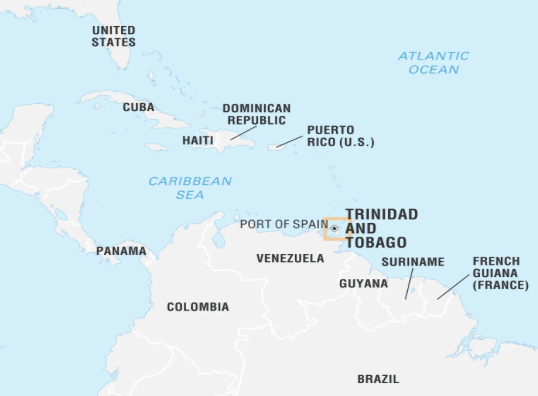Peshwa Bajirao
Syllabus: GS1/ History and Culture
Context
- Union Home Minister and Minister of Cooperation unveiled the statue of Shrimant Bajirao Peshwa I in Pune, Maharashtra.
About
- Peshwa Bajirao, also known as Bajirao I, was the 7th Peshwa of the Maratha Empire. He was the son of Balaji Vishwanath, the first Peshwa.
- He served under Chhatrapati Shahu I and is renowned for his military campaigns and expansion of the Maratha kingdom.
Military Achievements
- Bajirao Peshwa fought 41 battles in a span of 20 years and emerged victorious in all of them.
- Major Campaigns:
- Battle of Palkhed (1728): Defeated the Nizam of Hyderabad, demonstrating swift cavalry movement and encirclement tactics.
- Battle of Dabhoi (1731): It was a conflict between Peshwa Bajirao I and the Dabhade clan, led by Trimbak Rao Dabhade, over the authority to collect revenue from the province of Gujarat.
- Invasion of Delhi (1737): Successfully marched on the Mughal capital and forced the Mughals to cede territories without directly capturing Delhi.
Source: AIR
Alluri Sitarama Raju
Syllabus: GS1/ Personalities
In News
- Union Defence Minister at the 128th birth anniversary celebrations of Alluri Sitarama Raju, praised his contributions to India’s freedom struggle.
Who was Alluri Sitarama Raju?
- He was a prominent Indian revolutionary and freedom fighter who played a crucial role in the Indian independence movement, particularly by mobilizing tribal communities against British rule.
Role in the Freedom Struggle
- Revered as “Manyam Veerudu” (Hero of the Jungle) by local people for his courage and leadership.
- Influenced by the Non-Cooperation Movement and the revolutionaries of Bengal, he initially encouraged tribals to seek justice through local panchayats and boycott colonial courts.
- He organized and led tribal people and other sympathizers in guerrilla campaigns against British forces across the border regions of present-day Andhra Pradesh and Odisha.
- Alluri Sitarama Raju was captured and martyred on May 7, 1924.
Rampa Rebellion (1922–1924)
- Alluri Sitarama Raju is best known for leading the Rampa Rebellion, also known as the Manyam Rebellion.
- This was a tribal uprising against the British, largely fueled by the oppressive Madras Forest Act of 1882.
- This act restricted the free movement of Adivasis in their forest habitats and prevented them from practicing their traditional form of agriculture called ‘podu,’ which threatened their way of life.
Recognition
- His fearless resistance and sacrifice made him a legendary figure in Andhra Pradesh and Indian history. His birthday is celebrated as a state festival in Andhra Pradesh.
Source: AIR
Chautal
Syllabus: GS1/ Culture
In News
- During his visit to Port of Spain, Trinidad & Tobago, the Prime Minister of India showcased a Bhojpuri Chautal performance, emphasizing the rich cultural ties between India and its diaspora.
About Chautal
- Chautal (also spelled Chowtal or Chartal) is a significant and ancient rhythmic cycle (tala) in Hindustani classical music.
- It is primarily associated with the Dhrupad style, the oldest surviving form of Indian classical music, and is traditionally played on the pakhawaj, a barrel-shaped percussion instrument that pre-dates the tabla.
- The name “Chautal” means “four claps,” referring to its division structure.
- It consists of 12 beats (matras). There are two primary interpretations of its divisions:
- Four divisions of 4, 4, 2, 2 beats (all claps, no waves).
- Six divisions of 2 beats (clap-wave alternation), similar to Ektal.
- It emphasizes powerful, weighty playing, often using a more fluid, improvisational structure called “thapi” rather than a fixed “theka.”
- It is strongly associated with the ancient Dhrupad tradition, reflecting spiritual depth, tradition, and power in its rhythmic expression.
Source: TH
Roll Cloud
Syllabus: GS1/Geography
Context
- A rare “roll cloud,” a long, tube-shaped cloud formation, was spotted rolling over the coastline of Póvoa do Varzim, Portugal.
About
- A roll cloud is a low, horizontal, tube-shaped, and relatively rare type of arcus cloud. They usually appear to be “rolling” about a horizontal axis.
- It is created by a wave in the atmosphere that causes a rising and sinking motion over adjacent areas, allowing the clouds to form and appear to roll forward.
- This type of roll cloud can stretch many hundreds of miles long.

- Formation: Cool, moist air from over the ocean rolls in to meet warm, dry air over land.
- This rapid condensation, combined with air flowing in different directions above and below the cloud, shapes it into the distinctive cigar form, most commonly seen near coasts.
- It often forms ahead of a thunderstorm due to outflow winds from the storm’s downdraft interacting with warm, moist air.
- Not Dangerous: It looks dramatic but is not associated with severe weather or tornado activity.
- Common Locations: Roll clouds are unusual in Portugal, they are more common in places like Australia, where cold air from Tasmania meets warm mainland conditions.
- Rarity: Relatively rare and usually brief in duration.
Source: IE
Trinidad & Tobago
Syllabus: GS1/ Geography
Context
- PM Modi was conferred with ‘The Order of the Republic of Trinidad and Tobago’ – the country’s highest civilian honour.
- Trinidad and Tobago has become the first country in the Caribbean region to adopt India’s Unified Payments Interface (UPI)
About Trinidad and Tobago
- Location: Trinidad and Tobago is situated in the Caribbean Sea, off the northern edge of the South American mainland, just off the coast of Venezuela.
- It is part of the Lesser Antilles in the West Indies, geographically positioned between the Atlantic Ocean and the Caribbean Sea.
- The islands lie close to the continent of South America, separated by the Gulf of Paria.
- Physical Features: Trinidad, the larger of the two islands, is mostly flat with some low mountain ranges and fertile plains.
- Tobago, the smaller island, is more rugged and mountainous.
- The region lies close to the Orinoco River Delta and experiences tropical maritime climate.
- Capital: Port of Spain
- Demographic Aspects: Over 35% of the population is of Indian descent, largely tracing their roots to indentured labourers brought from India during British colonial rule.

Source: AIR
Kariyachalli island
Syllabus :GS1/Places in news
In News
- The Tamil Nadu Sustainably Harnessing Ocean Resources (TNSHORE) project is expected to start in August 2025 to save Kariyachalli island.
- It will try to restore the reefs with artificial modules, planting seagrass beds and reviving marine life.
Kariyachalli island
- It is one of the 21 islands in the Gulf of Mannar Marine National Park region.
- The gulf is home to one of the four major coral reefs in India.
- It is located on the southeastern coast of India between Rameshwaram and Thhothukudi.
- It has shrunk by over 70% since 1969 due to erosion, rising sea levels, and coral reef degradation, and is at risk of submersion by 2036.
Source :DTE
Special Intensive Revision
Syllabus: GS2/ Polity
In Context
- The Special Intensive Revision (SIR) of Electoral Rolls in Bihar is a large-scale, legally mandated exercise initiated by the Election Commission of India (ECI) to ensure the accuracy and inclusiveness of the state’s voter list.
About
- SIR is authorized under Article 324 of the Constitution and Section 21 of the Representation of the People Act, 1950.
- The main aim is to ensure that every eligible citizen is included in the Electoral Roll (ER), and no ineligible voter remains, thereby upholding the integrity of the electoral process and enabling free and fair elections.
- Booth Level Officers (BLOs) conduct house-to-house verification to:
- Enroll all eligible citizens.
- Remove ineligible names (such as deceased persons or those who have moved away).
- Update details for accuracy
Source: IE
India’s First Globally Recognised Equine Disease-free Compartment
Syllabus: GS2/ Health
In News
- India has set up its first Equine Disease-Free Compartment (EDFC) at the Remount Veterinary Corps (RVC) Centre & College in Meerut Cantonment, Uttar Pradesh.
- The facility was officially recognised by the World Organisation for Animal Health (WOAH).
About Equine Disease
- These are a wide range of illnesses that affect horses, ponies, donkeys, and their hybrids. These diseases can be caused by viruses, bacteria, parasites, or other factors, and may be either contagious or non-contagious.
- Notable examples include Equine Infectious Anemia, Influenza, Piroplasmosis, Glanders, and Surra.
- Additionally, India has remained free of African Horse Sickness since 2014.
Source: DD News
India’s Aluminium and Copper Vision Document
Syllabus: GS3/Economy
In News
- India has launched two vision documents aimed at scaling aluminium and copper production to meet future demands and support the country’s growth by 2047.
About the Documents
- The Aluminium Vision Document aims to increase production six fold by 2047, expanding bauxite production, doubling the aluminium recycling rate, and promoting low-carbon technologies.
- It highlights the role of aluminium in clean energy, electric mobility, and modern infrastructure.
- To meet demand, production must rise from 4.5 million tonnes per annum (MTPA) to 37 MTPA by 2047, requiring over ₹20 lakh crore in investment.
- Aluminium will be critical in driving the country’s journey towards becoming the third largest economy and a developed nation by 2047.
- The Copper Vision Document anticipates a sixfold increase in demand by 2047 and calls for a 5 million tonnes per annum increase in smelting and refining capacity by 2030.
- The strategy focuses on increasing secondary refining, enhancing domestic recycling, and securing overseas mineral assets.
| Do you know? – India is the 2nd largest Aluminium producer, among top-10 producers in refined copper and 3rd largest iron ore producer in the world. – In the non-ferrous metal sector, primary aluminium production in FY 2025-26 posted a growth of 1.5% over the corresponding period last year, increasing to 3.47 lakh ton (LT) in FY 2025-26 (April) from 3.42 LT in FY 2024-25 (April). During the same comparative period, refined copper production has grown by 15.6% from 0.45 LT to 0.52 LT. |
Objectives
- Both documents are aligned with the vision of making India a global leader in the aluminium and copper industries, contributing to energy transition, green technologies, and infrastructure growth.
- These efforts are part of India’s journey towards becoming a developed nation by 2047.
Source :TH
Durand Cup Tournament
Syllabus: Miscellaneous
Context
- The President of India unveiled and flagged off the trophies of the Durand Cup Tournament 2025 at Rashtrapati Bhavan Cultural Centre.
- The trophies unveiled include the Durand Cup, the President’s Cup and Shimla Trophy.
About the Durand Cup Tournament
- Organized by the Indian Armed Forces, it is Asia’s oldest and the world’s third oldest football tournament.
- Inaugurated in Shimla in 1888 as an Army Cup and only open to British Indian Army troops in India, later opened up to civilian teams.
- It is named after its founder, Sir Mortimer Durand, Foreign Secretary of British India.
Source: PIB
Previous article
Ham Radio Communication
Next article
Assessment of Earthquake for GNIP